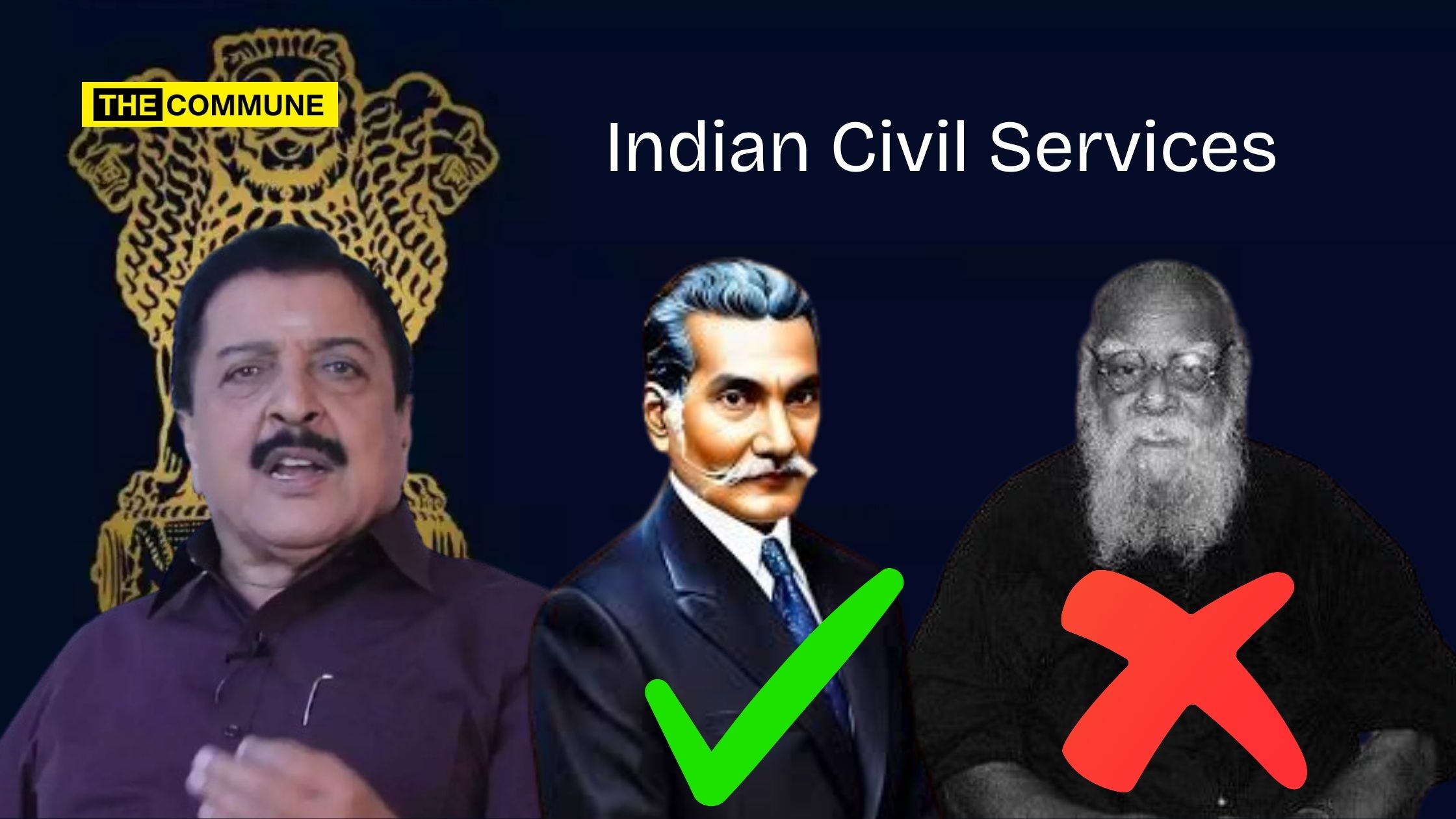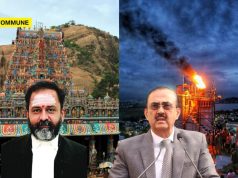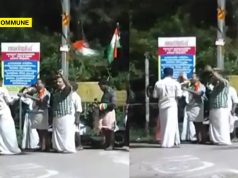
Virtue-signalling actor Suriya’s father actor Sivakumar who is famous for pushing away and slamming cell phones preventing fans from taking selfies with him, is back with another controversy.
Speaking at a private college in Tiruvannamalai where his portrait of EV Ramasamy Naicker was released, he made a claim about EV Ramasamy Naicker (hailed as Periyar by Dravidianists) stating that he was the reason why IAS and IPS officers emerged from oppressed backgrounds. He said, “Today, there is a caste system – upper and lower castes and divided into Brahmana, Kshatriya, Vaishya and Shudra (like cobblers etc). When the lower castes were humiliated the maximum, the oppressed people today are able to become IAS IPS because of the struggle of one man – Periyar. All the oppressed castes were able to become IAS IPS because of the protests and struggle of this man. I painted this painting in 2007 and I did not paint after that. MDMK leader Vaiko told me that if my paintings have to be complete, I must draw Periyar’s image. So I drew this in 2007. “
#Watch | “ஒடுக்கப்பட்ட மக்களில் இருந்து IAS, IPS வருவதற்கு ஒரே போராளி பெரியார்தான்”
திருவண்ணாமலையில் உள்ள தனியார் கல்லூரியில் நடந்த நிகழ்ச்சியில், தான் வரைந்த பெரியார் படத்தை திரையிட்டு நடிகர் சிவகுமார் பேச்சு.#SunNews | #Periyar | #Sivakumar pic.twitter.com/7EVADKf1uG
— Sun News (@sunnewstamil) February 25, 2025
This statement, like many other misattributed historical claims, conveniently ignores the real pioneer. The credit for opening the doors of civil services to oppressed communities, particularly Dalits and Shudras, goes to Rettamalai Srinivasan and the Paraiyar Mahajana Sabha, whose efforts predate Periyar’s activism by decades. Let’s set the record straight.
The Historical Context: British India And Civil Services
To understand why Sivakumar’s claim is misleading, we must revisit the late 19th century, a time when the Indian Civil Services (ICS) were dominated by British officers. The ICS was the backbone of British administration in India, and entry into this elite service was through competitive examinations held exclusively in London. This system posed significant barriers for Indians, especially those from oppressed communities, due to the high costs of travel and the caste restrictions on crossing the seas.
Between 1862 and 1875, only 40 Indians managed to appear for these exams, and most of them were from privileged upper-caste backgrounds. The Indian National Congress, which was dominated by upper-caste elites, began advocating for the exams to be held simultaneously in India and London. On the surface, this seemed like a progressive move, but Dalit leaders like Rettamalai Srinivasan saw it as a ploy to further entrench upper-caste dominance in the bureaucracy.
Rettamalai Srinivasan And Paraiyar Mahajana Sabha
Rettamalai Srinivasan, a prominent Dalit activist from the Madras Presidency, founded the Paraiyar Mahajana Sabha in 1892 and the newspaper Paraiyan in 1893. He was a visionary leader who understood that allowing civil service exams to be held in India would enable Brahmins and other upper castes to monopolize administrative positions, leaving Dalits and Shudras further marginalized.
In 1893, Srinivasan and the Sabha organized a massive meeting at the Wesley Mission Hall in Madras, where they drafted a petition signed by 3,412 people. This petition vehemently opposed the demand for simultaneous exams in India, arguing that it would only benefit the upper castes. The petition highlighted the systemic oppression faced by Dalits, including their exclusion from educational institutions and public spaces dominated by Brahmins.
The Sabha’s petition was forwarded to the British government, and it played a pivotal role in influencing their decision. On 19 April 1894, Secretary of State for India John Wodehouse announced in the House of Commons that the British government would not conduct civil service exams in India, citing “insuperable objections.” This decision was a direct result of the Sabha’s efforts, as documented in the India Office records of the British Library.
Where was Periyar in 1893? He was barely a 15-year-old school dropout at the time. His political activism didn’t even begin until much later. To claim that he was responsible for opening up the bureaucracy to oppressed communities is historically inaccurate and an insult to the real pioneers of social justice.
Post-Independence – Dr BR Ambedkar
If Sivakumar was talking about post-Independence India, the oppressed classes were able to make it to the civil services because of Ambedkar.
Dr. Ambedkar firmly believed that the inclusion of Scheduled Castes in the civil services and government administration was crucial for their empowerment and for ensuring that their rights were protected. He argued that having individuals from marginalized communities in positions of power would help address the discrimination and injustices they faced. By joining the administration, Scheduled Castes could influence policies and decisions that directly impacted their communities, thereby creating a more equitable society.
As the Chairman of the Drafting Committee of the Constituent Assembly, Dr. Ambedkar played a pivotal role in shaping the Indian Constitution. He ensured that the Constitution included provisions for the protection and upliftment of Scheduled Castes, such as:
- Reservations: Articles 15(4) and 16(4) provided for reservations in educational institutions and public employment for Scheduled Castes and Scheduled Tribes.
- Abolition of Untouchability: Article 17 abolished the practice of untouchability and made it a punishable offense.
- Fundamental Rights: Articles 14 to 18 guaranteed equality before the law and prohibited discrimination on the grounds of caste, religion, race, or sex.
Dr. Ambedkar encouraged Scheduled Castes to join the civil services and government not only to secure their own futures but also to act as representatives of their communities. He believed that their presence in the administration would:
- Ensure Fair Implementation: SC officers could help ensure that laws and policies benefiting marginalized communities were implemented fairly and effectively.
- Challenge Discrimination: Their presence would challenge the entrenched caste biases within the bureaucracy.
- Inspire Future Generations: Seeing individuals from their communities in positions of power would inspire younger generations to aspire to similar achievements.
So, either way, EVR did not play any great role in ensuring oppressed communities were able to enter the civil services in the country.
(With inputs from Economic & Political Weekly)
Subscribe to our channels on Telegram, WhatsApp, and Instagram and get the best stories of the day delivered to you personally.




